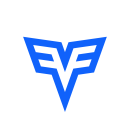Almost everyone has endured a negative interaction with customer service teams before, whether in retail, restaurants, technical support or commercial airlines. No industry is faultless. In fact, New Voice Media estimated that U.S. businesses lose $62 billion each year as a result of bad customer service experiences.
So why is this such a common problem? It seems that when there’s good news about a product or service, customer service teams don’t often hear about it. And when there’s bad news, it’s often already too late. The common thread? A lack of proactive communication.
That’s why, in order to have the strongest customer assistance capabilities possible, personalized and consistent communication is essential. A proactive approach allows customer success managers to better anticipate potential issues through data analysis and clearly communicate roadblocks to customers ahead of time for a seamless solution.
Built In San Francisco caught up with two customer success leaders to discuss the proactive communication habits they have implemented into their daily routines and the data that supports the strategies they use to satisfy client needs.
What’s one habit you’ve adopted that’s helped you be more proactive in your communications with clients?
Personalized and applicable communication has been key in being proactive with our customers. Feature updates are a great way for me to remember to reach out with purpose, focusing on how each individual customer might benefit, rather than a mass email sent at once. While I do have a template that I use as a jumping off point, the goal is to really focus on their needs and how we can be a value-add to them specifically, so I might phrase a message like this:
“When we spoke last month you said your team was trying to deliver a uniform technical interview. We have a new feature that standardizes that experience for all interviewers, so I have included a short video on how it works. Please feel free to use my calendar link to schedule some time to sync up so we can walk through it. Additionally, I’d love to discuss how we might continue helping you reach your goals this quarter.”
What role does data play in helping you and your team provide more proactive communications to customers?
Data is really critical in figuring out how to best engage with our clients on a deeper level. Given the number of accounts in my portfolio, I do not always have personal experience with how each individual customer uses the product. Therefore, telemetry data about how they use our software is critical to engage with customers with whom I have not yet had the opportunity to establish a relationship. I can use that information to be a value-add for them in my future communication so I can really nurture the relationship based on their specific use cases.
Since we focus on making talent accessible through assessment, an example of a quick note I might send an engineering customer would look like this: “I have noticed that your team has been creating custom Node.js tests. I think you may be able to save some time by using the test templates we already have in place with that framework that are included on your account. Here are some instructions on how to access it. Please let me know if you have any questions.”
Data is really critical in figuring out how to best engage with our clients on a deeper level.”
What’s a system or strategy you’ve put in place to get ahead of potential issues before they arise?
Our current strategy is checking in with our clients regularly to keep a pulse on their needs and share our updates. This way we can avoid any major issues as they arise. I try to keep a cadence of regular syncs since they are a great way to stay in tune while we work on our newer automated solution.
While it is still in the early stages, this dashboard will give us a view into our customer’s accounts and include information from product, finance, support and the customer success team. The idea is to be able to filter through, for example, next quarter’s renewals and prioritize clients with the most support tickets. This would allow me to review these issues carefully — without missing a beat — understand the most pressing concerns and support our clients with a resolution path. Additionally, the dashboard will help us identify feature gaps with our product team leading to productive discussions regarding where it is on our roadmap.
What’s one habit you’ve adopted that’s helped you be more proactive in your communications with clients?
I truly believe that communication is the key to client happiness and success, which is why I focus on consistent follow-up and check-ins. For example, our clients at Leyton engage with us to maximize different types of tax credits and benefits. This requires a collaborative effort between our specialist consultants and our clients. On average, the process takes about four to six weeks. Because of the length of this time frame, it is my job as the account manager to proactively follow up and check in with our clients to make sure they’re on board with each step. I send friendly reminders when needed, make sure all their outstanding questions are answered and assure them that I am always happy to help in any way.
What role does data play in helping you and your team provide more proactive communications to customers?
Data plays an important role as to how my team and I communicate with each client — especially data collected from client feedback calls and surveys. Each client has different needs. Collecting information about those needs can tell us how often we should follow up, how much detail we should provide on each touch point and more. This allows us to curate a specialized experience for each client.
For example, one client might prefer many check-in calls and a lot of supplementary education about tax benefits and our process, while another client may prefer that we have very few calls and finish the process as quickly as possible.
Communication is the key to client happiness and success.”
What’s a system or strategy you’ve put in place to get ahead of potential issues before they arise?
Our team has weekly internal check-ins about each client’s status. At these check-ins, we are able to see which clients may need some extra help and which are on track. We can also keep tabs on special cases that may arise each week since, again, each client is different. These internal meetings allow our team to discuss and collaborate on how to best move forward with each client and ensure we’re all on the same page.









